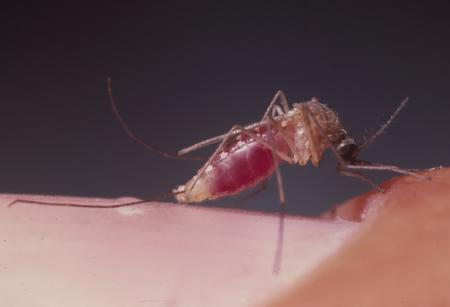Culex pipiens population genetics
Population structure of Culex pipiens complex (in collaboration with Gregory Lanzaro and staff in the Vector Genetics Lab at UC Davis. PI - Cornel)

Edillo, F. E., Tripet, F., McAbee, R. D., Foppa, I, M., Lanzaro, G. C., Cornel, A. J. and Spielman, A. A set of broadly applicable microsatellite markers for analyzing the structure of Culex pipiens s.l. (Diptera: Culicidae) populations. J. Med. Entomol. 44:145-149. 2007.
Peter Arensburger,1* et al. Sequencing of Culex quinquefasciatus establishes a platform for mosquito comparative genomics. Sequencing of Culex quinquefasciatus establishes a platform for mosquito comparative genomics. Science 333: 86-88. 2010.
Cornel, A. J., McAbee, R., Rasgon, J., Stanich, M., Scott, T. W. & Coetzee, M. Differences in extent of genetic introgression between sympatric Culex pipiens and Culex quinquefasciatus in California and South Africa. J. Med. Entomol.40: 36-51.2003
McAbee, R. D., Christiansen, J. A. and Cornel, A. J. A detailed larval salivary gland polytene chromosome photomap for Culex quinquefasciatus Say (Diptera: Culicidae) from Johannesburg, South Africa. J. Med. Entomol. 44: 229-237. 2007.
McAbee, R. D., Green, E. N., Holman, J., Christiansen, J., Frye, N., Dealey, K., Mulligan III, S., Brault, A. C. and Cornel, A. J. Identification of Culex pipiens complex mosquitoes in a hybrid zone of West Nile virus transmission in Fresno County, California. Am.J. Trop. Med. Hyg. 78: 303-310.2008.
Y Lee, S Seifert, CS Neiman, RD McAbee, P Goodell, R Trout, GC Lanzaro, AJ Cornel. (2011) High degree of single nucleotide polymorphisms in California Culex pipiens (Diptera: Culicidae) sensu lato. J Med. Entomol. 49(2): 299-306. 2012.

